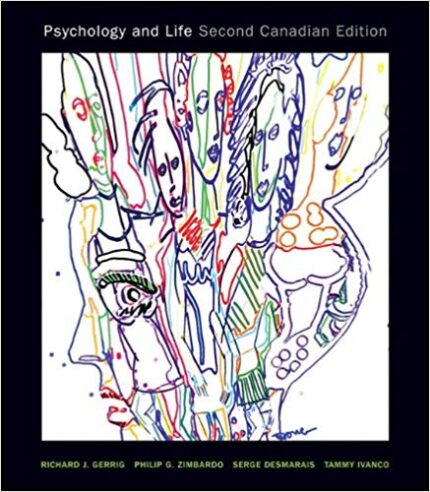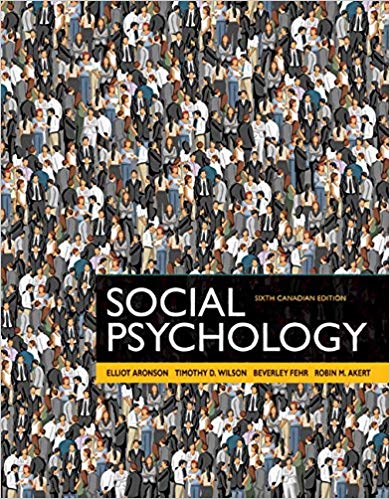Physiology of Behavior 11th Edition by Carlson – Test Bank
Population and Community Health Nursing, 6e (Clark)
Chapter 5 Cultural Influences on Population Health
1) The nurse is taking a class to become more culturally competent when providing care. In this class the nurse learns that the American work ethic is considered to be one that is hardworking and individualistic. The nurse should categorize the work ethic as being a part of:
1. Culture.
2. Ethnicity.
3. Nationality.
4. Acculturation.
Answer: 1
Explanation: 1. Culture is a universal experience and can transcend ethnic lines. Ethnicity can be part of culture. In culture, people act in prescribed behavior patterns, though the patterns may have variations from group to group. The American work ethic is considered a cultural characteristic of its citizens. Nationality is the country of birth. Ethnicity is an aggregate of cultural practices and social influences that shape a community’s distinct identity. Acculturation is the process of becoming cultured into a group.
Nursing/Int.Conc: Nursing Process: Assessment
Client Need: Psychosocial Integrity
Cognitive Level: Analysis
Learning Outcome: 5-1
2) Nursing students from various backgrounds enroll in a university’s nursing curriculum. The process by which they become nurses includes aspects of:
1. Culture.
2. Ethnicity.
3. Worldview.
4. Acculturation.
Answer: 4
Explanation: 4. Acculturation is cultural assimilation, where there is acquisition of some beliefs, values, and behaviors of another culture, in this case, nursing. While the students ultimately become part of the nursing culture, they have to be assimilated or undergo acculturation to become part of that culture. Ethnicity is an aggregate of cultural practices, social influences, and racial characteristics which is not a part of entering the nursing culture. Worldview refers to how a cultural group views the universe and their relationship to it.
Nursing/Int.Conc: Nursing Process: Implementation
Client Need: Psychosocial Integrity
Cognitive Level: Application
Learning Outcome: 5-1
3) During a health history a patient states he is Asian American. What should the nurse realize this patient is describing?
1. Race.
2. Culture.
3. Ethnicity.
4. Nationality.
Answer: 3
Explanation: 3. Referring to oneself by placing the cultural group before the word American explains the patient’s ethnicity, which is an aggregate of cultural practices, social influences, and racial characteristics that shape a distinct identity. Many Americans of different national origins celebrate and practice customs that originated in their ancestors’ countries of birth. Nationality is the country of birth. Race is an artificial categorization based on genetic inheritance and appearance. Culture is the sum of the ways of thinking and acting within a group that defines the group. Ethnicity can be present in culture.
Nursing/Int.Conc: Nursing Process: Assessment
Client Need: Psychosocial Integrity
Cognitive Level: Application
Learning Outcome: 5-1
4) The population health nurse notes that the African American population of the United States has a higher incidence of cardiovascular disease and diabetes. What aspect of this population’s diet should the nurse relate to these health problems?
1. High in fat and sugars.
2. Low in processed foods and fat.
3. Low in fiber-rich foods and exercise.
4. High in starchy vegetables and sugars.
Answer: 1
Explanation: 1. The traditional African American diet that relies on foods high in fat and sugars is connected to the high rates of cardiovascular disease and diabetes in the United States. It also has historical roots in foods that were affordable on very limited incomes, which tended to be the fattier meats and foods with sugar. A diet low in processed food and fats helps to eliminate these risk factors. Fiber rich foods in addition to exercise contribute to cardiovascular and diabetes prevention. While starchy vegetables and sugars can contribute to diabetes, the fat content is a determinant in cardiovascular disease.
Nursing/Int.Conc: Nursing Process: Evaluation
Client Need: Health Promotion and Maintenance
Cognitive Level: Application
Learning Outcome: 5-2
5) While providing health teaching to an older patient of Asian descent the nurse notes that the patient agrees to all questions the nurse asks. What method should the nurse use to determine that the patient understands health teaching?
1. Use simple language that the person can understand.
2. Have another member of the person’s family do the teaching.
3. Ensure that there is an interpreter nearby while doing the health teaching.
4. Ask the person to give an explanation, in their own words, of the health teaching.
Answer: 4
Explanation: 4. There is a great respect for authority among older people of Asian background. As such, they tend to agree with what is being said or done rather than question it, even if only for clarity of understanding. It would be considered disrespectful to question authority. The nurse could elicit understanding of the person by asking them to explain what was taught–essentially a “return demonstration.” There is no indication that the person does not understand English, therefore an interpreter may not be necessary. A family member might wish to be present, but it is not necessary to the success of the health teaching. Using simple language is not the most reliable method to determine if the person understands health teaching; it would be best to elicit understanding of the person by asking them to explain what was taught.
Nursing/Int.Conc: Nursing Process: Evaluation
Client Need: Psychosocial Integrity
Cognitive Level: Application
Learning Outcome: 5-2
6) During a home visit the nurse notes that a patient originally from Mexico seems passive during health teaching and follow-up questions about the home treatment plan. What should the nurse conclude about this patient’s behavior?
1. The patient probably does not understand English.
2. The patient is not interested in what the nurse is doing.
3. There may be cultural factors that explain the patient’s behavior.
4. The patient may be uncomfortable with having the nurse in the home.
Answer: 3
Explanation: 3. Cultural background may influence how the patient responds to questions and teaching. In Mexican culture, it is expected that the nurse, as the authority figure, will take care of all the patient’s needs. The nurse may perceive this as disinterest. The patient assumes a dependent position in health care. There is no indication that the patient is not fluent in English, or that there is discomfort in having the nurse perform a home visit.
Nursing/Int.Conc: Nursing Process: Assessment
Client Need: Psychosocial Integrity
Cognitive Level: Analysis
Learning Outcome: 5-2
7) The nurse desires to improve cultural competence when providing patient care. What action should the nurse take first to develop this competency?
1. Understand the culture of the patient.
2. Identify the goals for culturally competent care.
3. Gain proficiency in another language beyond English.
4. Understand and recognize the nurse’s own cultural background.
Answer: 4
Explanation: 4. Until the nurse can understand and acknowledge the cultural background from which the nurse operates, it will be very difficult to develop cultural competence. Gaining proficiency in another language and understanding the patient’s culture is important to developing cultural competence as well as understanding the goals of culturally competent care, but less important than the nurse understanding and recognizing his or her own cultural background.
Nursing/Int.Conc: Nursing Process: Implementation
Client Need: Psychosocial Integrity
Cognitive Level: Application
Learning Outcome: 5-3
8) The population health nurse is planning to develop cultural competence within a community. Which actions should the nurse take? (Select all that apply.)
1. Ensuring that all patients are treated in the same manner.
2. Recognizing subgroup differences within cultural groups.
3. Ensuring that health clinics employ minority staff to deliver care.
4. Engaging in community partnerships to help design culturally relevant services.
5. Maintaining an up-to-date demographic, cultural, and epidemiologic community profile.
Answer: 2, 4, 5
Explanation: 2. Maintaining an up-to-date community demographic profile and engaging in partnerships to help design relevant services are two measures to help develop culturally competent care. Employing minority staff and treating all patients the same way does not indicate cultural competence and could actually be offensive to the patients. It is important to recognize that differences within subgroups of a particular culture may exist.
4. Maintaining an up-to-date community demographic profile and engaging in partnerships to help design relevant services are two measures to help develop culturally competent care. Employing minority staff and treating all patients the same way does not indicate cultural competence and could actually be offensive to the patients. It is important to recognize that differences within subgroups of a particular culture may exist.
5. Maintaining an up-to-date community demographic profile and engaging in partnerships to help design relevant services are two measures to help develop culturally competent care. Employing minority staff and treating all patients the same way does not indicate cultural competence and could actually be offensive to the patients. It is important to recognize that differences within subgroups of a particular culture may exist.
Nursing/Int.Conc: Nursing Process: Implementation
Client Need: Psychosocial Integrity
Cognitive Level: Application
Learning Outcome: 5-5














Reviews
There are no reviews yet.